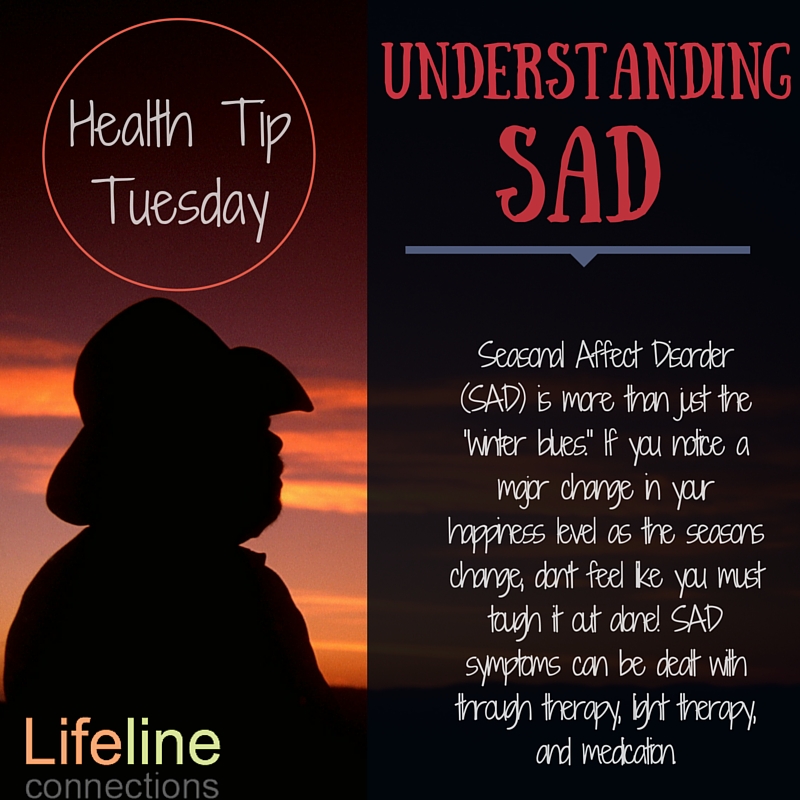
SAD – Seasonal Affective Disorder
It’s September, which means we are nearing the end of summer. The seemingly endless hot, sunny days we’ve had this year are quickly transitioning to shorter, drearier, rainier ones. I enjoy summer as much as the next person; I spend most of my time outside, socializing and being somewhat active. But my fall/winter self is in stark contrast. The cold and rain makes me more inclined to hibernate, not socialize, and stay indoors to avoid the weather. I’m certainly not alone in this tendency; many of my friends and relatives admit that they have a proclivity for this as well.
Now, before I go any further, there is absolutely nothing wrong with staying in and having alone/cozy time now again. The winter months are a wonderful time for self-reflection and introspection; it’s when we spend too much time away from natural light, from friends, and from exercise, that our mood might be negatively affected. While most of us might feel a little despondent during the colder, darker months of the year, roughly 15% of Americans suffer a more severe form of this, called Seasonal Affective Disorder – often referred to by the convenient acronym, SAD – which is a form of depression that is related to seasonal changes, usually (but not in all cases) more prevalent in the fall and winter. There are many factors that contribute to SAD – e.g. your genetics, your geographical location, and your lifestyle choices – so it’s important to take all these into consideration when dealing with the “winter blues.”
Below are some tips and preventative measures you can use to help avoid and/or alleviate symptoms of SAD. Even if you haven’t been officially diagnosed with this condition, or find it unlikely that you suffer from its symptoms, taking these steps can help you feel better overall during fall and winter months.
As mentioned, there are several variables that contribute to SAD, one of which is your geographical location. People who live at higher latitudes on the globe are more likely to have lower Vitamin D levels, especially during winter, due to limited sunlight exposure. Low levels of Vitamin D have been associated with increased risk of SAD. So, if do you live in northern regions where sunlight can be sparse, light therapy has been shown to be incredibly beneficial. (You can find personal light boxes for sale here.) Another way to ensure you’re getting enough sunlight exposure is to walk outside for a minimum of 30 minutes a day, regardless if there are blue skies or not. If need be, you can also supplement orally with a Vitamin D pill. The Vitamin D Council recommends starting with 1,000 IU of Vitamin D3 daily for every 25 lbs of body weight.
Establishing a workout routine may also ease symptoms associated with seasonal depression. Most of us are apt to avoid working out when it’s cold and wet outside, but it’s crucial for our mental health to remain active during the fall and winter months. I recommend joining a gym and taking advantage of the group classes that are usually offered. It is also a great way to meet new people and stay socially engaged.
Another crucial component to keeping seasonal depression at bay is to make sure you are eating a well-rounded, nutrient-dense, and anti-inflammatory diet. This means eating lots of vegetables, adequate amounts of protein and healthy high quality fats from sources like salmon or sardines. Inflammation has been shown to be a contributing factor to depression, so eating foods high in omega-3 fatty acids may counter this, as will taking a high quality fish oil supplement (two reputable brands to use are Nordic Naturals or Carlson). Sugar is incredibly inflammatory so make sure to limit your sugar consumption during the holidays; this will help ease symptoms of seasonal depression.
So there you have it – getting enough sunlight, exercise and eating healthy will allow you to handle the changes in weather and lifestyle that are inevitably coming.
